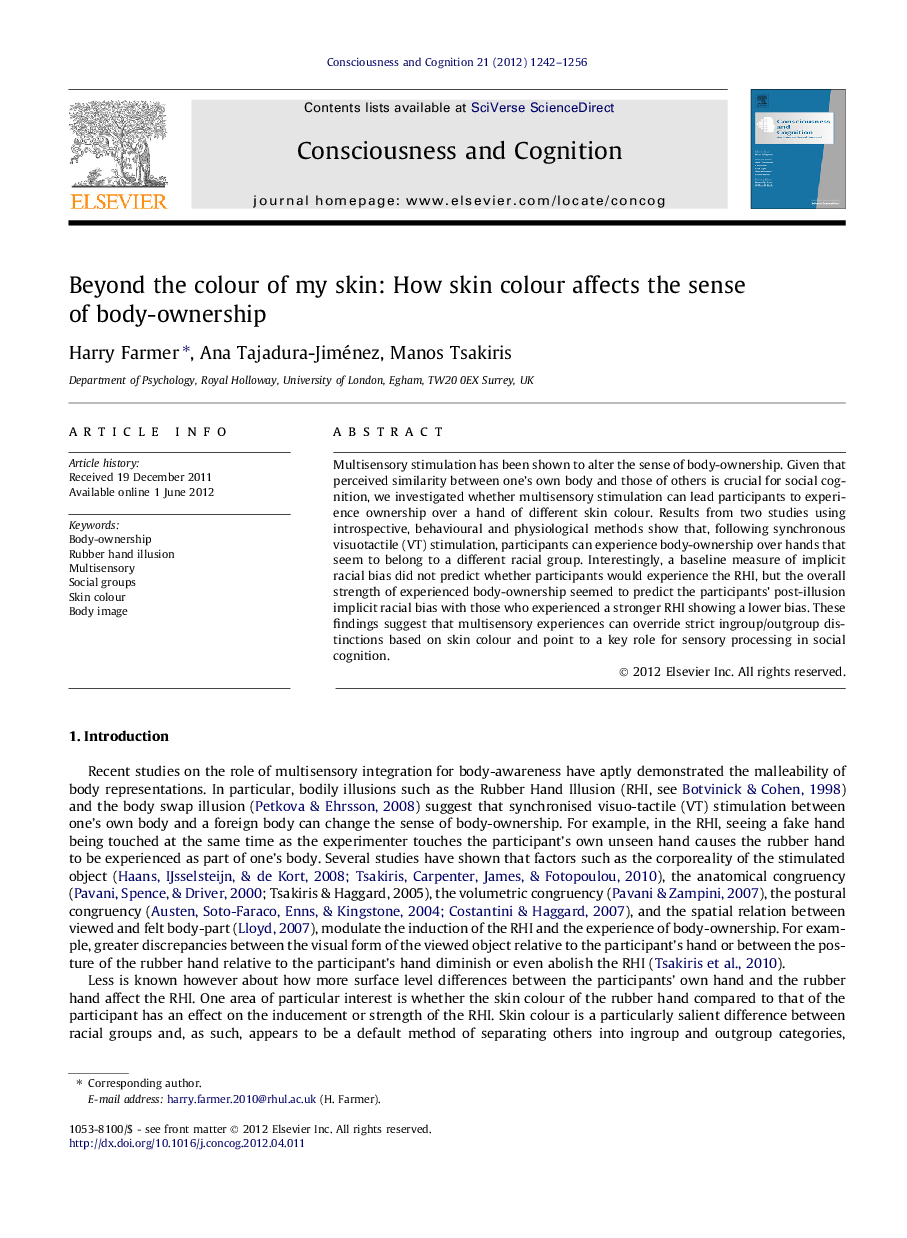| Article ID | Journal | Published Year | Pages | File Type |
|---|---|---|---|---|
| 927615 | Consciousness and Cognition | 2012 | 15 Pages |
Multisensory stimulation has been shown to alter the sense of body-ownership. Given that perceived similarity between one’s own body and those of others is crucial for social cognition, we investigated whether multisensory stimulation can lead participants to experience ownership over a hand of different skin colour. Results from two studies using introspective, behavioural and physiological methods show that, following synchronous visuotactile (VT) stimulation, participants can experience body-ownership over hands that seem to belong to a different racial group. Interestingly, a baseline measure of implicit racial bias did not predict whether participants would experience the RHI, but the overall strength of experienced body-ownership seemed to predict the participants’ post-illusion implicit racial bias with those who experienced a stronger RHI showing a lower bias. These findings suggest that multisensory experiences can override strict ingroup/outgroup distinctions based on skin colour and point to a key role for sensory processing in social cognition.
► The effect of skin colour on the rubber hand illusion was investigated. ► Introspective, behavioural and physiological measures of the illusion were taken. ► Participants experienced body-ownership over hands belonging to a racial outgroup. ► Participant’s experience of body-ownership negatively predicted post-VT stimulation racial bias. ► These findings point to a key role for sensory processing in social cognition.
